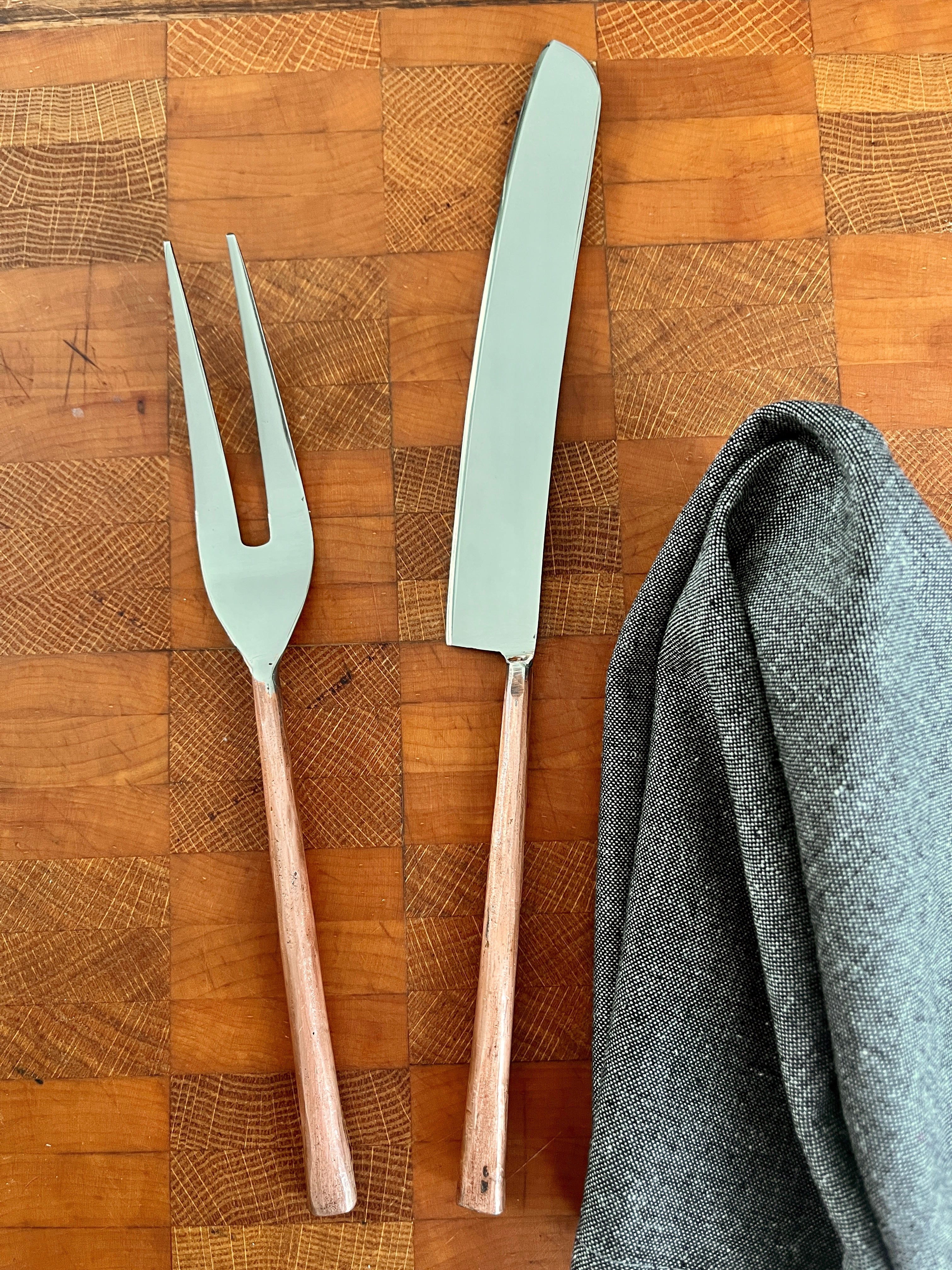Did you know that the name fork originates from the Latin word “furca”, which means pitchfork? Surprisingly the fork is the youngest of the cutlery group, compared to spoons and knives. Some think it took so long to become a regular at the dinner table because it looked too much like the devil’s pitchfork, which made people suspicious.
It’s thought that the forks and other unique flatware used in ancient Egypt, Rome, and Greece were used as cooking tools, for carving and piercing meats.
Who invented the dining table fork?
Scholars noticed references to dining table forks in early cookbooks. In the 13th century, the King of Naples received a cookbook as a gift. The book taught diners to pick up slippery lasagna noodles with a pronged instrument.
Later, Italian dining table forks gained popularity in the French court when the Italian wife of Henry II brought a few silver table forks with her. From there, the habit of dining with forks spread throughout Europe and then the rest of the world.
So, who invented the fork as cutlery to be used at the dining table? We cannot be sure, but a manuscript from 1004 CE tells the story of Maria Argyropoulina, a Greek niece of Byzantine Emperor Basil II, who would use a certain golden instrument with two prongs to eat her meals. During this time, the norm was to cut food using a knife and eat it using one’s fingers. Argyropoulina’s fork use wasn’t appreciated by conservative members of the society though - her refusal to eat with her fingers was seen as arrogant and vain.
Victorian Age: unique table forks
In the Victorian age, they had unique dining rules, and as these rules grew, so did the need for specialized forks. There were specialized tongs and forks designed solely for eating asparagus and since touching food with your hands was considered poor etiquette, large bread forks allowed diners to transport bread onto their plates.
In 1825, the lettuce fork with its splayed tines speared and served lettuce, with each leaf seasoned individually before eating.

Antique mango forks
The mango fork was another Victorian dining implement for the wealthy. Used as early as 1900 in Cuba, it was a while before the mango fork became common in the US, since mangos were rarely imported. This fork has a long, central tine that pierces the bottom center of a mango, through the seed. This lets you eat the mango like a Popsicle. It is also used on a plate to hold the mango firmly, as the fruit is sliced.
INOX table fork designs
Our selection of stainless steel forks may not be as strange as those from the past but our unique flatware and specialty forks have something for everyone. What’s more, the handcrafted styles we provide are often multi-purposeful so they are both eye-pleasing and practical.

From left to right: dinner, salad, pastry, and sardine fork
Dinner Fork
The dining table fork is probably the most common of all forks since practically every meal needs a fork to eat! Longer than the salad fork, dinner forks are the largest fork in your flatware set. Our dinner forks are part of each handcrafted silverware set and are available as copper flatware, nascent steel, burnt black, or antique gold flatware designs.
Salad Fork
A smaller version of the two forks in our 5-piece flatware sets, many people use a salad fork to eat everything, but the shorter length and design are perfect for eating salad.
Tip: When serving a salad with dinner, set the salad fork furthest from the plate, next to the dinner fork.

Pastry Fork
Our pastry forks are perfect for eating cake, pie, and pastries. The fork has three tines, with a wider, flattened left tine. Designed so that family and guests can hold their plates with one hand while cutting pastry with the fork edge, this specialty fork comes in a set of four. For those who love quiche, this is the fork to use!
Tip: Place the pastry fork above the plate with prongs facing right when setting the table.

Sardine Fork
We call this table fork a sardine fork because of its size and unique prongs. Shorter in length than our other forks, with a stout, wide utensil, this accessory is ideal for spearing sardines from a tin. But, if sardines aren’t your tinned seafood of choice, don’t rule this fork out - it’s a wonderful tool for spearing mackerel, tuna fillets, pickled herring, razor clams, rainbow trout, smoked salmon, squid…and so much more.
Tip: Enjoy tinned sardines as they do in France during apéro hour. Apéro is short for apéritif, an hour or so before dinner for unwinding with a cocktail and a few snacks. Have your sardines with a mix of vegetables, a nice aioli, or mayonnaise, and crusty bread or crackers.

Carving Fork
Carving forks hold large pieces of meat firmly in place and keep your hands a safe distance from the knife cutting the food. The long prongs allow the fork to go deeper into the meat. The carving knife helps to carve large roasts, turkey, and ham. Our carving sets and other serving pieces come in various designs to harmonize with your copper flatware.

Serving Fork
This large fork has from two to four prongs, but most have three. Often used to serve meat and other main dishes during dinner, our Hostess Serving Sets include this multipurpose serving fork.

Cheese Fork
Our cheese forks are a must-have for spearing cheese cubes, olives, fruit, pickles, and other delicious bites on a charcuterie board or grazing table.
We hope you’ve enjoyed this past-to-present look at various table fork designs. Our selection of handcrafted stainless steel forks for everyday dining or entertaining at home will make stylish and practical additions to your unique flatware collection.
Photo credits:
Main photo: maksym tymchyk (unsplash)
Carrie of Pantry To Table



